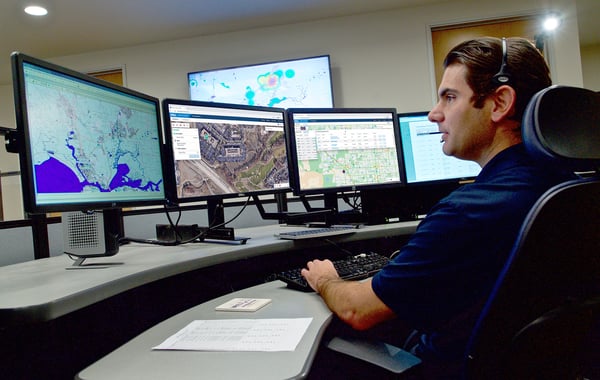Your Agency Isn’t Getting Paid: Here’s What You Can Do
5 Ways to Prepare Your Agency for an Active Shooter
I’m not an expert
Was this information valuable?

I’m not an expert. No one is. However, I think we can look back at past active threat incidents and glean some insight from those agencies that have run an active shooter to gain lessons for the active threat. I hope you never have to. But your mindset has to be not, if, but when.
What Defines an Active Shooter?
In a study released in September of 2014, the FBI defined an active shooter as “an individual actively engaged in killing or attempting to kill people in a confined and populated area.”[i] One could easily argue — even before the Las Vegas massacre — that an active shooter can be deadly in open areas as well. Unlike the blast or bombing where there the event provoking trauma is static, this type of terrorism may be difficult to contain and continues to threaten the public and place law enforcement/emergency services at risk until it’s neutralized.
Analyzing historical data culled in this study allows some insight on active shooter. It’s common, occurring at least once a month; and it’s prevalent, where 40 of 50 states plus the District of Columbia have had at least one incident.
Other data in this study also allow some insight that may be useful in responding to these events. Places of commerce, such as a shopping mall, and educational facilities make up the majority of venues where active shooters haven happened in the past. This knowledge may allow law enforcement and emergency services to anticipate and address scene logistics well in advance.
Evolution of Pathology: a History of Active Shooters in the U.S.
- In what is likely the first active shooter occurred in Austin, Texas in 1966 where 49 people were shot and 18 killed. A sniper on the University of Texas campus shot from a tower for 96 minutes before being killed by police and a civilian. The shooter had murdered his wife and mother just prior.
- The pathology was dormant until it resurfaced in 1984 in San Ysidro, California where a gunman spent 78 minutes shooting people inside a McDonalds before being killed by a police sharpshooter; but not until 41 people had been shot, 22 of them dying.
- In 1991 in Killeen, Texas, a man drove his pickup into a restaurant and emerged from it shooting. Lasting 12 minutes, 51 people were shot with 24 fatalities. The gunman was confronted by an armed patron and shot himself ending the incident.
- In 1997, an active shooter incident that lasted for 44 minutes was the result of failed bank robbery in North Hollywood, California, were a mutation of the pathology was observed. First, there were two shooters, something that hadn’t been routinely observed previously. Secondly, the shooters wore body armor that complicated efforts to stop them. Lastly, law enforcement responding to the event was outgunned. Despite automatic weapons fire for most of that time, of the 22 injuries, only the gunmen died.
- In 1999, a failed bombing lead to the active shooter incident at Columbine High School. Thirty-nine people were shot, and 15 died including the gunmen. It’s likely this event where in the interest of scene safety, evacuation of casualties was delayed or aborted. This event led to the reconceptualization of law enforcement/emergency services response to an active incident.
- In 2007, 56 students and staff at Virginia Tech were shot over 11 minutes, where 33 died. Two other students were found murdered just prior to the active shooter incident.
- In 2012, another mutation in this pathology occurred in Aurora, Colorado, when in just seven minutes a gunman shot 82 people inside a movie theatre where 12 died. The shooter surrendered to police immediately upon being challenged. This was the first major, active shooter incident to occur at night.
- Later in 2012, the Sandy Hook elementary school massacre took place where in under five minutes 29 adults and children were shot, and 27 including the shooter died. Previous to the attack, the shooter had committed a homicide at a different location.
- The Pulse Nightclub massacre occurred in 2016 in the early morning hours of June 12, another night-time attack. The active shooter portion was over in 12 minutes; but the shooter barricaded himself inside the building at it took nearly three hours to end the siege. This was the first major incident where social media had an impact.
- And, of course, the Harvest Festival massacre on the Las Vegas Strip, as of this writing, the worst shooting incident in modern U.S. history, again occurred at night.
How to Prepare Your EMS Agency for an Active Shooter
These incidents are getting worse, occur in shorter period of time and show no sign of abating. Use of improvised weapons of mass destruction can take many forms. Here are five ways to help your agency prepare for an active shooter situation.
1. Adopt a “When it Happens” Mentality
A rapidly evolving event can happen in any community. While we tend to think of large cities or tourist attractions as obvious targets, no community is immune. While most agencies should already have a mass casualty plan, it should be reviewed to be able to address the most likely mission critical incidents (MCI) scenario as well as an evolving, dynamic incident.
Many communities are integrating law enforcement/EMS integration for rapid deployment and intervention. If your community has not done this, it should. EMS providers should be able to enter scenes that aren’t completely secured, with law enforcement, under certain conditions. This takes planning and collaboration at the chief level before training and implementation can happen at the line level. This may also require acquisition of protective equipment not typical for EMS, like that of ballistic body armor.
Agencies should also be prepared for the aftermath. Having a plan for employee wellness and psychological services as well as relationships with mental health professionals established beforehand will make it easier to activate after the incident.
2. Integrate with Your Community
Preparing for an active shooter event may be an opportunity to collaborate with public safety partners and hospitals in a different way. Because active shooter is prominent in the news, inviting local media to cover a training gives agencies an opportunity to develop a rapport with the press before a large event happens.
Take opportunities to pre-plan and integrate with your community. For example, schools are historically an active shooter target. After Columbine, Denver Public Schools took steps to establish a convention for identifying doors at each of its buildings. Following a pattern, each door at each school is numbered on the inside and out. These door numbers are used when communicating day-to-day access to buildings for a run-of-the-mill 9-1-1 call, and would be invaluable in the confusion of a major event.
3. Protocols Should Evolve
Multiple studies have debunked the notion of using spinal immobilization for patients who have been shot.[ii] [iii] [iv] Strongly consider reviewing your agency’s protocols so that providers aren’t put in the position where they feel obligated to delay transport of patients for fear of doing more harm. Consider using methods of moving patients that aren’t labor intensive.
Many public safety agencies are equipping each individual with tourniquets. Your agency should have easy access to them and your protocols should encourage a low threshold for application. They are lifesaving.[v]
4. Embrace Social Media
Your agency should have a social media presence for day-to-day public relations and community involvement. Many news agencies and the public at large rely on social medial platforms for up-to-date information during day-to-day operations. By having an active, established presence will allow for dispersal of information during times of crisis.
5. Raise Your Crews Well
We can’t write a protocol or action plan for every single situation is impossible. An agency that has a healthy training program, effective operating model and line supervisors that are well-trained and effective are a must for reacting to major events. While surge plans may call for off-duty management to respond for large-scale incidents, the first five major decisions at a major incident have the largest influence on the rest of the event.
References:
[i] A Study of Active Shooter Incidents, 2000 – 2013. Texas State University and Federal Bureau of Investigation, U.S. Department of Justice, Washington D.C. 2014.
[ii] Barkana, et al. Pre-hospital stabilization of the cervical spine for penetrating injuries to the neck—is it necessary? Injury, Int. J. Care Injured. 2000 31;305-309.
[iii] Haut, et al. Spine immobilization in penetrating trauma: more harm than good? J Trauma 2010;68:115–20; discussion 20–1.
[iv] Vanderlan WB, Tew BE, McSwain NE. Increased risk of death with cervical spine immobilisation in penetrating cervical trauma. Injury, 2009; 40: 880–3
[v] Kragh JF Jr, Walters TJ, et al. Survival with emergency tourniquet use to stop bleeding in major limb trauma. Ann Surg. 2009;249(1):1.
Related Posts
Meet the New ZOLL Dispatch and ZOLL Respond CAD Solution
Providers Can Even the Playing Field During Open Negotiations – Here’s How
ZOLL Pulse Blog
Subscribe to our blog and receive quality content that makes your job as an EMS & fire, hospital, or AR professional easier.
ZOLL Pulse Blog
Subscribe to our blog and receive quality content that makes your job as an EMS, fire, hospital, or AR professional easier.




